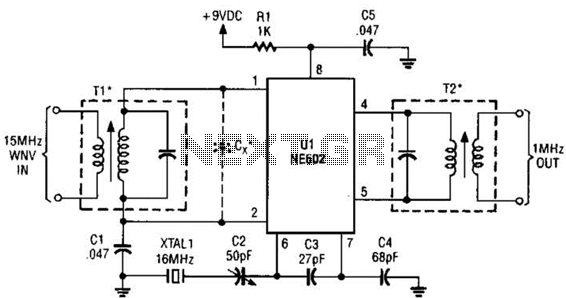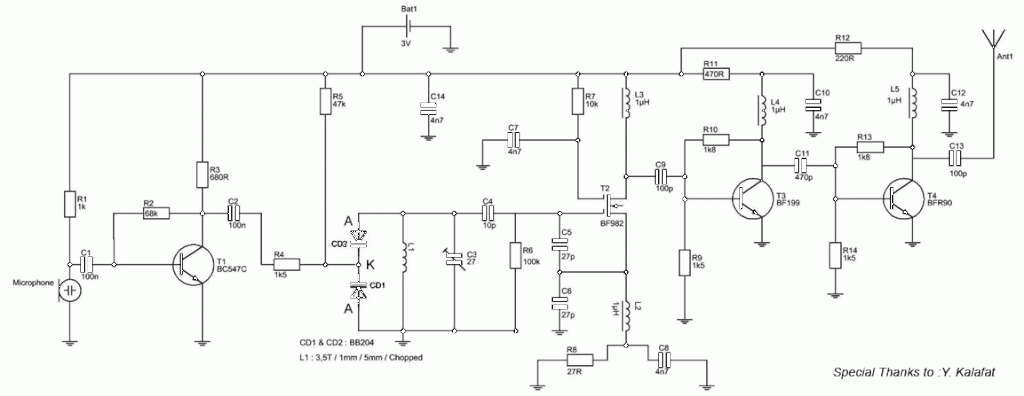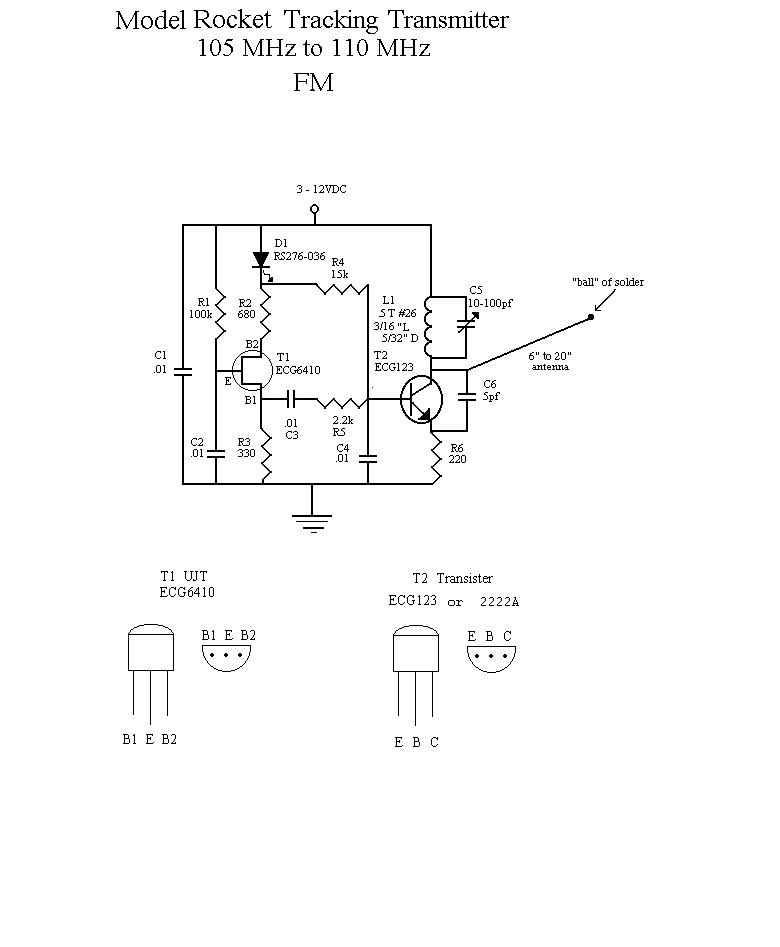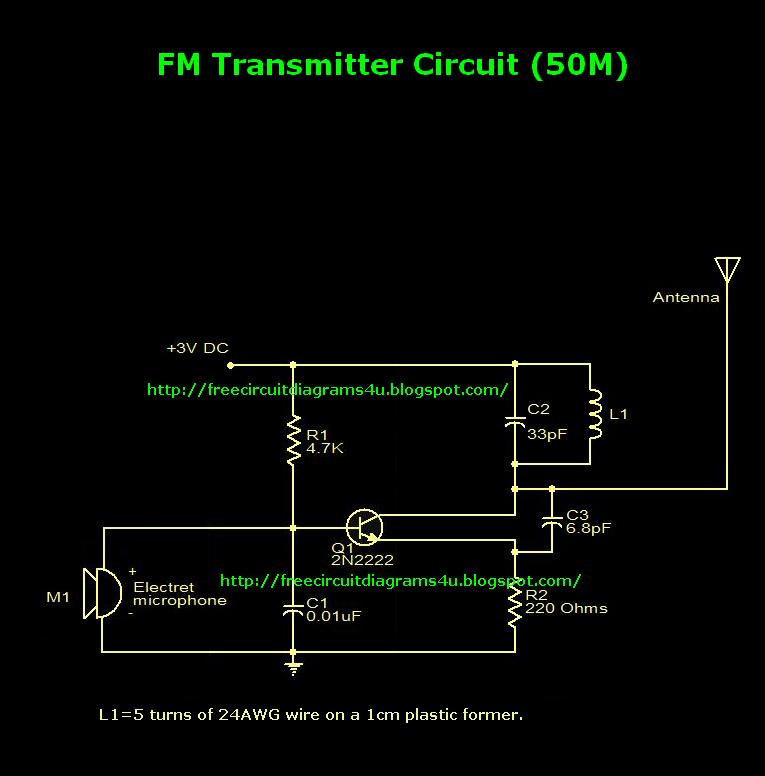
BF495 Transistor For Am Transmitter Radio

This circuit illustrates the BF495 transistor used in an AM transmitter radio circuit diagram. Features include a powerful AM transmitter utilizing ceramic components.
The BF495 transistor is a high-frequency NPN transistor commonly used in RF applications, including AM transmitters. In this circuit, the BF495 is employed to amplify the audio signal before modulation. The circuit typically consists of several key components: the BF495 transistor, a power supply, an audio input source, and an antenna.
The operation begins with the audio input, which is fed into the base of the BF495 transistor. As the audio signal varies, it modulates the current flowing through the transistor, which is configured in a common-emitter configuration to achieve amplification. The collector of the transistor is connected to a tuned circuit, which consists of an inductor and capacitor that resonate at the desired AM frequency. This tuned circuit is crucial as it allows the circuit to transmit signals effectively over the airwaves.
The output from the collector is then coupled to an antenna, which radiates the modulated signal. The use of ceramic components in the circuit enhances stability and reduces losses, contributing to the overall efficiency of the transmitter. The circuit may also include additional components such as resistors and capacitors for biasing and filtering purposes, ensuring optimal performance.
In summary, the BF495 transistor circuit provides a robust solution for AM transmission, leveraging the characteristics of the transistor and the design of the tuned circuit to achieve effective signal broadcasting.This circuit shows about BF495 Transistor For Am Transmitter Radio Circuit Diagram. Features: powerful AM transmitter, using ceramic .. 🔗 External reference
The BF495 transistor is a high-frequency NPN transistor commonly used in RF applications, including AM transmitters. In this circuit, the BF495 is employed to amplify the audio signal before modulation. The circuit typically consists of several key components: the BF495 transistor, a power supply, an audio input source, and an antenna.
The operation begins with the audio input, which is fed into the base of the BF495 transistor. As the audio signal varies, it modulates the current flowing through the transistor, which is configured in a common-emitter configuration to achieve amplification. The collector of the transistor is connected to a tuned circuit, which consists of an inductor and capacitor that resonate at the desired AM frequency. This tuned circuit is crucial as it allows the circuit to transmit signals effectively over the airwaves.
The output from the collector is then coupled to an antenna, which radiates the modulated signal. The use of ceramic components in the circuit enhances stability and reduces losses, contributing to the overall efficiency of the transmitter. The circuit may also include additional components such as resistors and capacitors for biasing and filtering purposes, ensuring optimal performance.
In summary, the BF495 transistor circuit provides a robust solution for AM transmission, leveraging the characteristics of the transistor and the design of the tuned circuit to achieve effective signal broadcasting.This circuit shows about BF495 Transistor For Am Transmitter Radio Circuit Diagram. Features: powerful AM transmitter, using ceramic .. 🔗 External reference





